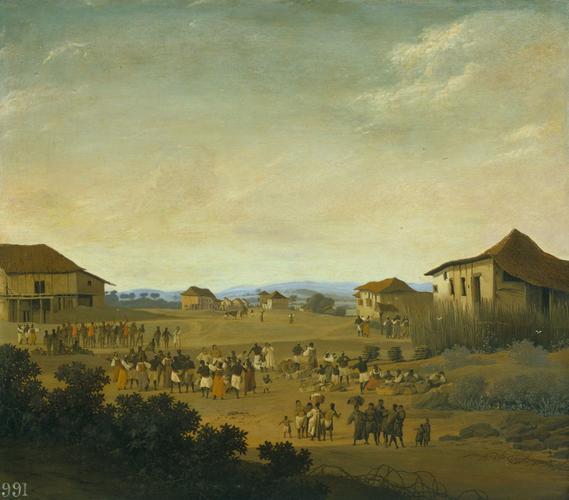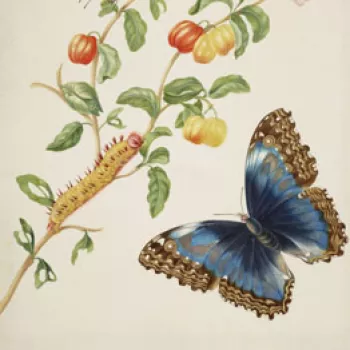A Village in Brazil c.1645-80
Oil on panel | 51.0 x 59.0 cm (support, canvas/panel/stretcher external) | RCIN 403542
-
A village in Brazil forms part of an important and fascinating group of works by Post illustrating the Dutch Republic’s interest in Brazil, which it colonised between 1630 and 1654. Post - together with another painter, Albert Eekhout, the cartographer Georg Markgraf and numerous observers and scientists - was invited to join an expedition to Brazil led by Count Johan Maurits of Nassau-Siegen, who served as Governor-General from 1637 to 1644. The expedition resulted in what has been described as ‘the most extensive and varied collection of its kind that was formed until the voyages of Captain Cook’. Post, who came from a family of artists, made several paintings and numerous drawings while in Brazil of the buildings, terrain, flora and fauna, and he continued to paint numerous views of Brazil after his return to Haarlem in 1644. His drawings and paintings proved to be popular with major collectors such as Christian IV of Denmark; Frederick William, the Elector of Brandenburg; and Louis XIV, to whom Count Johan Maurits gave them as gifts. Overall, the material constitutes a unique pictorial record of the inhabitants of a South American country and it formed the basis of publications such as Rerum per octennium in Brasilia by Caspar van Baerle (1647) and Historia naturalis Brasiliae (1648), illustrated with over five hundred woodcuts.
Few paintings by Post survive from his actual time in Brazil, only six of them dated, but it is likely that he did many more. A village in Brazil was almost certainly undertaken after Post’s return, but might still record a scene witnessed by the artist. Paintings such as this, on a small scale done from life, have an immediacy that anticipates oil-sketches of the nineteenth century - Post’s sustained interest in world cultures, arising from his travels has been likened (somewhat implausibly) to the work of Henri ‘Douanier’ Rousseau. The composition and style of A village in Brazil and similar works mark a reversion to the orthodoxies of Dutch landscape painting after the more direct approach that characterises those done in Brazil. The scene depicted is a village fair or market.
Catalogue entry adapted from Enchanting the Eye: Dutch paintings of the Golden Age, London, 2004Provenance
The painting belonged to the Venetian artist Giovanni Antonio Pellegrini, who no doubt acquired it when he was working in The Hague in 1718. It then passed into the possession of Consul Joseph Smith in Venice, whose collection was bought by George III in 1762 (Dutch and Flemish list, no 47)
-
Medium and techniques
Oil on panel
Measurements
51.0 x 59.0 cm (support, canvas/panel/stretcher external)
61.6 x 69.2 x 3.3 cm (frame, external)
Other number(s)









